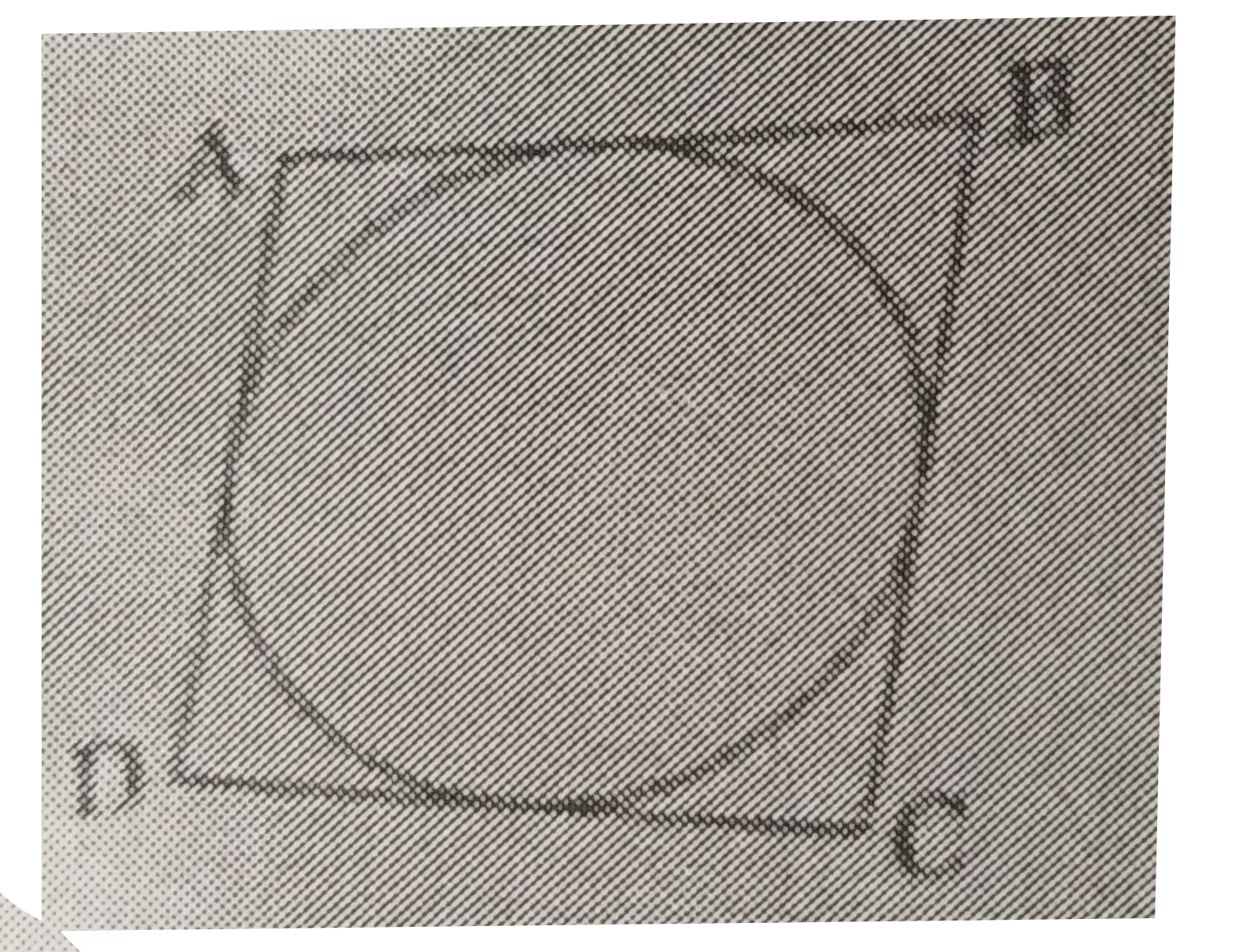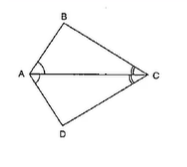A quadrilateral ABCD is drawn to circumscribe a circle. Prove that AB+CD=AD+BC
To prove that for a quadrilateral ABCD circumscribing a circle, the relation AB+CD=AD+BC holds, we can follow these steps:
Step 1: Understand the properties of tangents
When a circle is inscribed in a quadrilateral, the lengths of tangents drawn from an external point to the points of tangency are equal. For example, if we draw tangents from point A to points P and Q on the circle, then AP=AQ.
Step 2: Assign tangent lengths
Let:
- AP=AS=x (tangents from point A)
- BP=BQ=y (tangents from point B)
- CR=CQ=z (tangents from point C)
- DR=DS=w (tangents from point D)
Step 3: Express the sides of the quadrilateral in terms of tangent lengths
From the tangent properties, we can express the sides of the quadrilateral as follows:
- AB=AP+BP=x+y
- BC=BQ+CQ=y+z
- CD=CR+DR=z+w
- AD=AS+DS=x+w
Step 4: Write the equation to prove
We need to prove that:
AB+CD=AD+BC
Substituting the expressions we found:
(x+y)+(z+w)=(x+w)+(y+z)
Step 5: Simplify both sides
On the left side:
x+y+z+w
On the right side:
x+w+y+z
Both sides are equal, thus confirming:
AB+CD=AD+BC
Conclusion
Therefore, we have proved that for a quadrilateral ABCD that circumscribes a circle, the relation AB+CD=AD+BC holds true.
---
When a circle is inscribed in a quadrilateral, the lengths of tangents drawn from an external point to the points of tangency are equal. For example, if we draw tangents from point A to points P and Q on the circle, then AP=AQ.
Let:
- AP=AS=x (tangents from point A)
- BP=BQ=y (tangents from point B)
- CR=CQ=z (tangents from point C)
- DR=DS=w (tangents from point D)
From the tangent properties, we can express the sides of the quadrilateral as follows:
- AB=AP+BP=x+y
- BC=BQ+CQ=y+z
- CD=CR+DR=z+w
- AD=AS+DS=x+w
We need to prove that:
AB+CD=AD+BC
(x+y)+(z+w)=(x+w)+(y+z)
On the left side:
x+y+z+w
x+w+y+z
AB+CD=AD+BC
Therefore, we have proved that for a quadrilateral ABCD that circumscribes a circle, the relation AB+CD=AD+BC holds true.
Topper's Solved these Questions
- BOOK - NCERTCHAPTER - CIRCLESEXERCISE - Exercise 10.12videos
CIRCLES
- BOOK - NCERTCHAPTER - CIRCLESEXERCISE - SOLVED EXAMPLES3videos
CIRCLES
- BOOK - NCERTCHAPTER - ARITHMETIC PROGRESSIONSEXERCISE - Exercise 5.320videos
ARITHMETIC PROGRESSIONS
- BOOK - NCERTCHAPTER - CONSTRUCTIONSEXERCISE - EXERCISE 11.27videos
CONSTRUCTIONS
Similar Questions
A quadrilateral ABCD is drawn to circumscribe a circle. Prove that AB+CD=AD+BC
View SolutionIn Figure, a quadrilateral ABCD is drawn to circumscribe a circle .
Prove that
AB+CD=BC+AD
 View Solution
View SolutionA quadrilateral ABCD is drawn to circumscribe a circle. Prove that AB+CD=AD+BC.
or
A circle touches all the four sides of a quadrilateral ABCD. Prove that AB+CD=BC+DA.View SolutionIn Fig. 10.103, a quadrilateral ABCD is drawn to circumscribe a circle such that its sides AB, BC, CD and AD touch the circle at P, Q, R and S respectively. If AB=x cm , BC=7cm , CR=3cm and AS=5cm , then x= (FIGURE) (a) 10 (b) 9 (c) 8 (d) 7
View SolutionIn Fig.2, a quadrilateral ABCD is drawn to circumscribe a circle, with centre O, in such a way that the sides AB, BC, CD and DA touch the circle at the points P, Q, R and S respectively. Prove that AB + CD = BC + DA.
View SolutionIn Figure, diagonal AC of a quadrilateral ABCD bisects the angles A and C . Prove that AB=AD and CB=CD
 View Solution
View SolutionIn a quadrilateral ABCD , given that ∠A+∠D=90o . Prove that AC2+BD2=AD2+BC2 .
View SolutionThe diagonals of quadrilateral ABCD,ACandBD intersect in O. Prove that if BO=OD, the triangles ABCandADC are equal in area.
View SolutionProve that the diagonals of quadrilateral ABCD,AC and BD intersect in O. Prove that if BO=OD, the triangles ABC and ADC are equal in area.
View SolutionABCD is a cyclic quadrilateral. ABandDC are produced to meet in E. Prove that EBC−EDA.
View Solution

